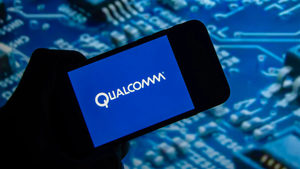
The retail sector is currently experiencing a profound transformation, driven by a complex interplay of persistent inflation, evolving consumer priorities, and rapid technological advancements. Consumers, facing economic uncertainties, are adopting more cautious and intentional spending habits, leading to significant immediate implications for major retailers. This shift is compelling companies to re-evaluate their strategies, product offerings, and operational efficiencies to remain competitive in a rapidly changing market.
For industry giants like The Home Depot (NYSE: HD), these trends translate into a nuanced challenge, as traditional drivers of growth, such as large-scale home renovations, face headwinds. Retailers are now scrambling to adapt to a landscape where value, convenience, and essential goods are prioritized over discretionary purchases, marking a critical period for strategic pivots and innovation.
The Great Retail Rebalancing: Why Consumer Caution Matters
The current state of consumer spending is characterized by a mix of resilience and prudence, largely influenced by persistent, albeit easing, inflation and fluctuating economic confidence. While headline inflation in the U.S. has moderated from its 2022 peak, the cumulative effect of rising prices continues to exert financial pressure on households, leading to a strong emphasis on value. Shoppers are actively seeking cheaper alternatives, utilizing coupons, and prioritizing essential items, often researching extensively before making purchases and increasing their savings.
A notable long-term trend involves a significant shift in consumer spending away from physical goods and towards services and experiences. Americans, in particular, are increasingly prioritizing "making memories over buying material goods," with a majority favoring leisure travel, workshops, and events. This preference underscores a broader re-evaluation of how disposable income is allocated. Adding to the complexity, high interest rates have dampened enthusiasm for large, debt-financed purchases, such as major home renovations or durable goods. This, coupled with anticipated price increases from tariffs, is expected to lead to a contraction in discretionary spending for many U.S. consumers from late 2025 through 2030, further intensifying the pressure on non-essential retail categories.
The digital realm continues to gain prominence, with mobile payment systems and e-commerce dominating consumer transactions, especially among younger generations like Millennials and Gen Z. Consumers now expect seamless, personalized experiences across all channels, blurring the lines between online and offline shopping. This omnichannel preference necessitates significant investment in digital infrastructure and data analytics for retailers to meet evolving customer expectations.
The Home Depot, a bellwether for the home improvement sector, exemplifies the challenges and adaptations occurring within this environment. The company has observed a clear shift in consumer behavior, with a move away from large, expensive renovation projects towards smaller, more affordable DIY endeavors like painting, gardening, and minor repairs. This directly reflects consumers' response to higher interest rates and inflation, which make large-scale, debt-funded projects less attractive. While Home Depot reported a 9.4% year-over-year increase in sales to $39.9 billion in Q1 2025 and a 4.9% rise to $45.3 billion in Q2 2025, comparable sales experienced a slight dip, indicating a mixed performance despite overall revenue growth. A concerning trend for brick-and-mortar operations is a 4.2% decrease in customer foot traffic, as consumers increasingly opt for online shopping or curbside pickup, fundamentally altering the in-store retail experience. In response, Home Depot is actively tailoring its product mix to align with DIY demand, emphasizing items for smaller, cash-funded projects, and investing heavily in its professional (Pro) segment, which now accounts for 50% of its sales.
Shifting Fortunes: Winners and Losers in the New Retail Landscape
The evolving consumer spending landscape is creating a clear delineation between winning and losing sectors and companies. Retailers specializing in essential goods, such as groceries, health, and personal care, are generally experiencing more stable or even increased sales, as these categories are less susceptible to discretionary cuts. Similarly, value-oriented retailers and those with strong private-label offerings are thriving, catering to the budget-conscious consumer's demand for affordability. The shift towards experiences over goods is also benefiting the services sector, including leisure, travel, and entertainment industries. Companies with robust omnichannel capabilities and strong digital platforms are also emerging as winners, as they can seamlessly integrate online and in-store experiences to meet modern consumer preferences for convenience and personalized interactions.
Conversely, retailers heavily reliant on discretionary categories, especially those selling large-ticket items like furniture, major appliances, and large-scale home renovation materials, are facing significant headwinds. The impact of high interest rates on credit-financed purchases, coupled with cautious consumer sentiment, is leading to a slowdown in these segments. Traditional brick-and-mortar retailers that have been slow to adapt to digital transformation and offer integrated online-to-offline experiences are also struggling to retain market share.
Home Depot, while experiencing some softness in its traditional DIY segment due to consumers postponing large projects, is strategically positioning itself to mitigate these challenges and capitalize on new opportunities. Its significant investment in the professional (Pro) segment is a calculated move to secure a more resilient revenue stream. The acquisition of companies like SRS Distribution Inc. bolsters its B2B capabilities, allowing it to offer higher-margin products and services to contractors and builders, thereby offsetting the volatility in DIY spending. Furthermore, Home Depot's focus on smaller, cash-funded DIY projects ensures it continues to capture a portion of the home improvement market, even as big-ticket purchases decline. The company's efforts in supply chain diversification, with over 50% of its product assortment now sourced domestically, aim to reduce reliance on external tariffs and ensure competitive pricing and product availability, a critical factor for both DIY and Pro customers.
Industry Resonance: Broader Implications and Adaptations
The current consumer spending trends reverberate across the entire retail industry, creating a domino effect that necessitates widespread adaptation. Beyond the direct impact on sales, retailers are grappling with significantly rising operational costs, including energy bills, rental costs, wages, and materials. Inflation has also driven up the cost of goods, making it harder to source inventory affordably and leading to persistent supply chain disruptions and higher shipping expenses. This environment places immense pressure on profit margins, forcing retailers to prioritize efficiency and cost management like never before. Many are exploring strategic cost-reduction initiatives, including shared services models and automation, to maintain profitability.
Despite the challenges, e-commerce growth continues unabated, with online sales consistently outperforming traditional retail growth. This sustained digital expansion fuels demand for industrial logistics space and pushes retailers to further invest in their online presence, delivery infrastructure, and digital customer experiences. The need for agility and innovation has become paramount; retailers must develop flexible inventory management and pricing strategies to quickly adapt to shifting consumer demands while simultaneously mitigating rising input costs. Investment in retail technology, particularly Artificial Intelligence (AI), is increasingly viewed as essential for unlocking profitable growth, improving demand forecasting, optimizing inventory, and personalizing customer interactions.
Historically, periods of economic uncertainty and high inflation have often led to similar shifts towards value and essential goods. The current environment, however, is unique due to the accelerated pace of digital adoption and the omnipresence of technology in consumer behavior. Comparisons can be drawn to post-recessionary periods where consumers tightened their belts, but today's retailers also face the added complexity of managing vast omnichannel networks and leveraging sophisticated data analytics to understand and predict consumer actions. Regulatory and policy implications, such as potential tariffs, also add another layer of uncertainty, impacting sourcing strategies and pricing decisions across the industry. The broader implication is a permanent recalibration of retail business models, moving towards lean operations, data-driven decision-making, and a heightened focus on customer value.
The Path Forward: Anticipating Retail's Next Moves
Looking ahead, the retail sector is poised for a period of continued evolution, marked by both challenges and opportunities. In the short term, retailers will likely continue to emphasize value propositions and competitive pricing strategies to attract and retain cautious consumers. This will include promoting private-label goods, offering tiered product lines, and strategically using promotions. The focus on optimizing the customer experience across all touchpoints, from enhanced digital apps to seamless in-store navigation and convenient pickup options, will remain a top priority. Investments in supply chain resilience and diversification, including increasing domestic sourcing, will continue to be critical to mitigate geopolitical risks and cost volatility.
Long-term possibilities suggest a more deeply integrated technological retail landscape. The implementation of AI-powered solutions will become more sophisticated, driving dynamic pricing, personalized marketing, advanced demand forecasting, and efficient inventory management. Generative AI tools, such as chatbots, are expected to further enhance customer service and engagement. Retailers will also seek to identify and scale alternative revenue streams, such as retail media networks, and explore creative ways to add an "experiential twist" to their offerings, even for physical goods, to cater to the consumer's preference for experiences over possessions. For companies like Home Depot, this could mean expanding in-store workshops or offering design consultation services as part of a broader "project solution."
Potential strategic pivots include a continued bifurcation of focus between the professional and DIY segments, with more tailored approaches for each. Home Depot's acquisition of SRS Distribution Inc. signals a clear commitment to strengthening its higher-margin B2B capabilities, a trend that other big-box retailers might emulate by expanding services catering to businesses. Market opportunities may emerge in niche categories that align with current spending habits, such as sustainable products, smart home technology for energy efficiency, and products supporting smaller, self-funded home improvement projects. Challenges will undoubtedly include navigating persistent labor shortages, managing inflationary pressures on operational costs, and staying ahead of rapidly evolving consumer expectations. Ultimately, the retailers that can demonstrate agility, embrace technological innovation, and consistently deliver compelling value will be best positioned for success in this dynamic environment.
Conclusion: Adapting to a New Era of Consumerism
The current shift in consumer spending habits represents more than just a momentary blip; it signifies a fundamental recalibration of the retail market. Key takeaways highlight a consumer base that is increasingly price-sensitive, value-driven, and experience-oriented, with a strong preference for digital engagement and seamless omnichannel interactions. Retailers are facing immense pressure to adapt to rising operational costs while simultaneously investing in technology and supply chain resilience. The performance of major players like The Home Depot (NYSE: HD) underscores this complexity, demonstrating the need to pivot from traditional growth drivers (large DIY projects) to more resilient segments (Pro services, smaller DIY projects) and embrace technological innovation.
Moving forward, the market will likely be characterized by continued innovation in customer experience, a relentless pursuit of operational efficiency, and a strategic focus on diversifying revenue streams. Companies that can effectively leverage data to understand and anticipate consumer needs, offer compelling value propositions, and maintain agile supply chains will be best positioned for long-term success. Investors should closely watch for several indicators in the coming months: retailers' ability to manage inventory and pricing effectively in a high-inflation environment, the success of their digital transformation initiatives, their capacity to expand into high-growth segments like services or professional businesses, and their overall operational efficiency in controlling costs. The ability to pivot quickly and strategically will be the defining characteristic of market leaders in this new era of consumerism.






